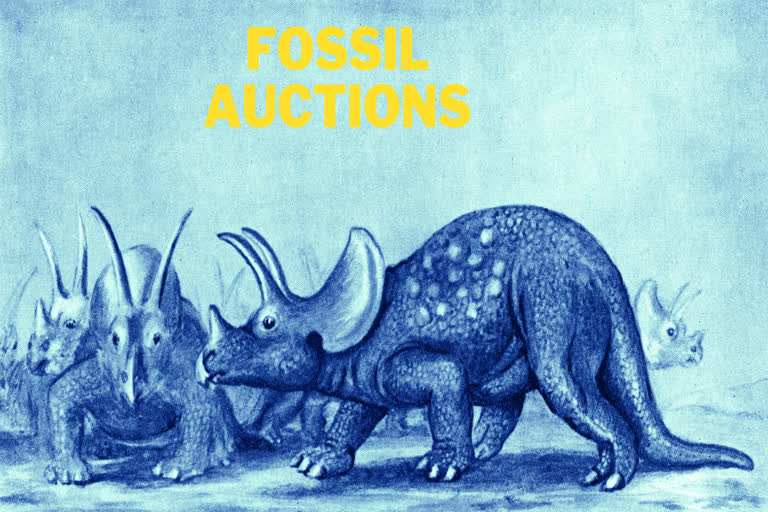New Scientist, UK: One of the fossils is a familiar three-horned Triceratops. The other is a probable young cousin of Tyrannosaurus rex, a rare representative of what the "tyrant king" was like during its gangly, awkward years. There is no evidence the two dinosaurs died in combat but they have still been the subject of palaeontological gossip for a decade.
Enough cash has now finally been stumped up to give the bones home. Rather than being bought by a private bidder, a museum has paid – probably millions – for the fossilised duo. Although palaeontologists should be able to examine the fossils, bone buying is a dangerous game and it isn't clear that museums should ever shell out for specimens like this.
Commercial fossil hunter Clayton Phipps and his colleagues found the skeletons in 2006 on a private ranch in Montana and undertook the excavations themselves with an eye towards a future sale. Years before, a near-complete T. rex nicknamed Sue had been purchased for more than $8 million at auction, starting off a commercial fossil boom that started ratcheting up the market value for dinosaurs.
Buzz around the Duelling Dinosaurs started to kick off in 2011. Word among experts was that the owners of the fossils were looking to sell to a national museum for a price exceeding $9 million. Yet no one bit. So the Duelling Dinosaurs went to auction at Bonham's auction house in 2013 but failed to meet the reserve price. It seemed as if the bones were in limbo – invisible to science for not being in a museum, but far too pricey for any institution to afford.
The North Carolina Museum of Natural Sciences has now announced that it has bought the fossils, although it hasn't said how much it spent. We don't yet know what the Duelling Dinosaurs fossil will be able to tell us about life in the Cretaceous, but I worry that combined with the record-breaking auction of Stan, a T. rex sold for $31.8 million earlier this year, we may be seeing a price boom that harms science.
